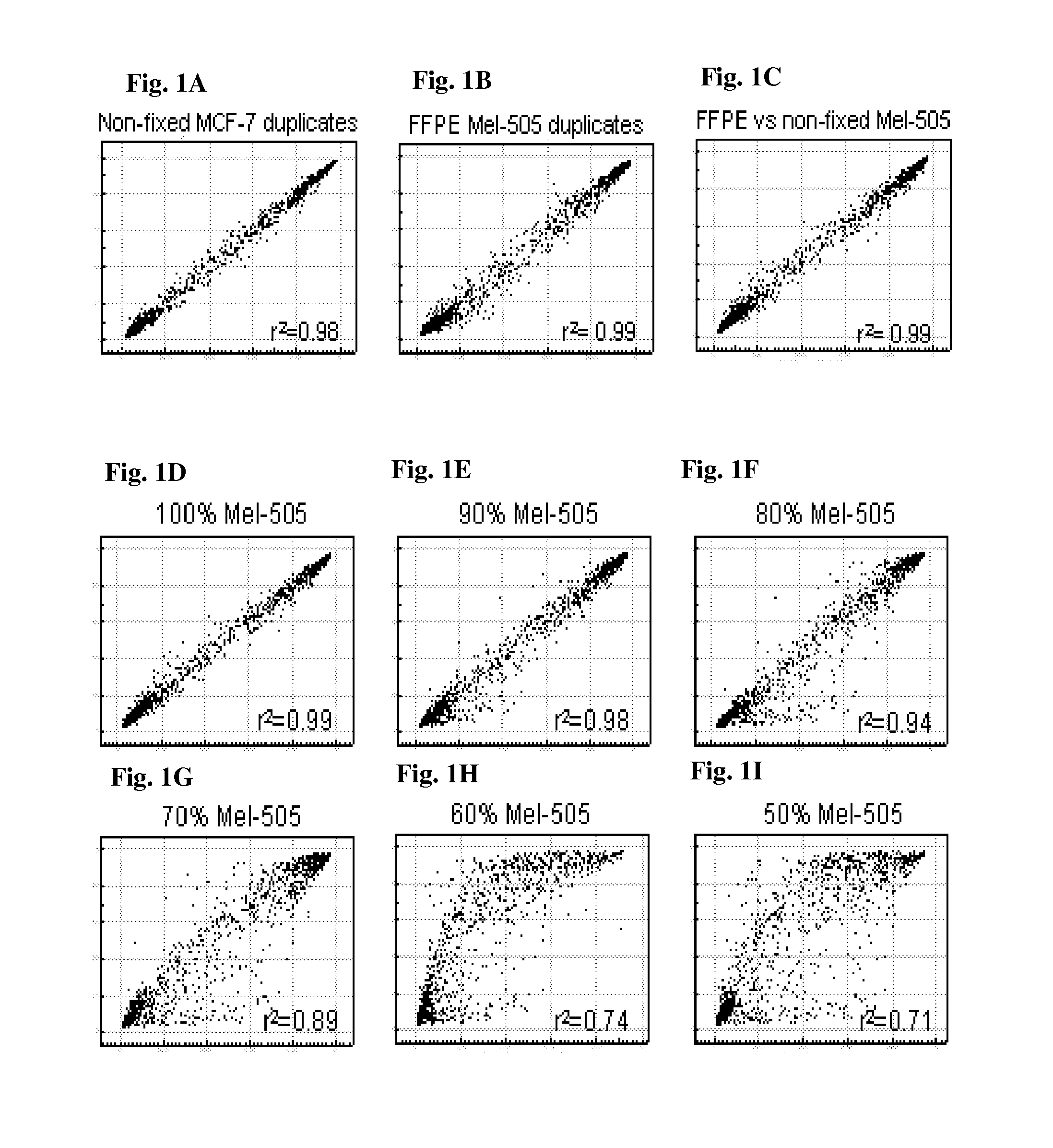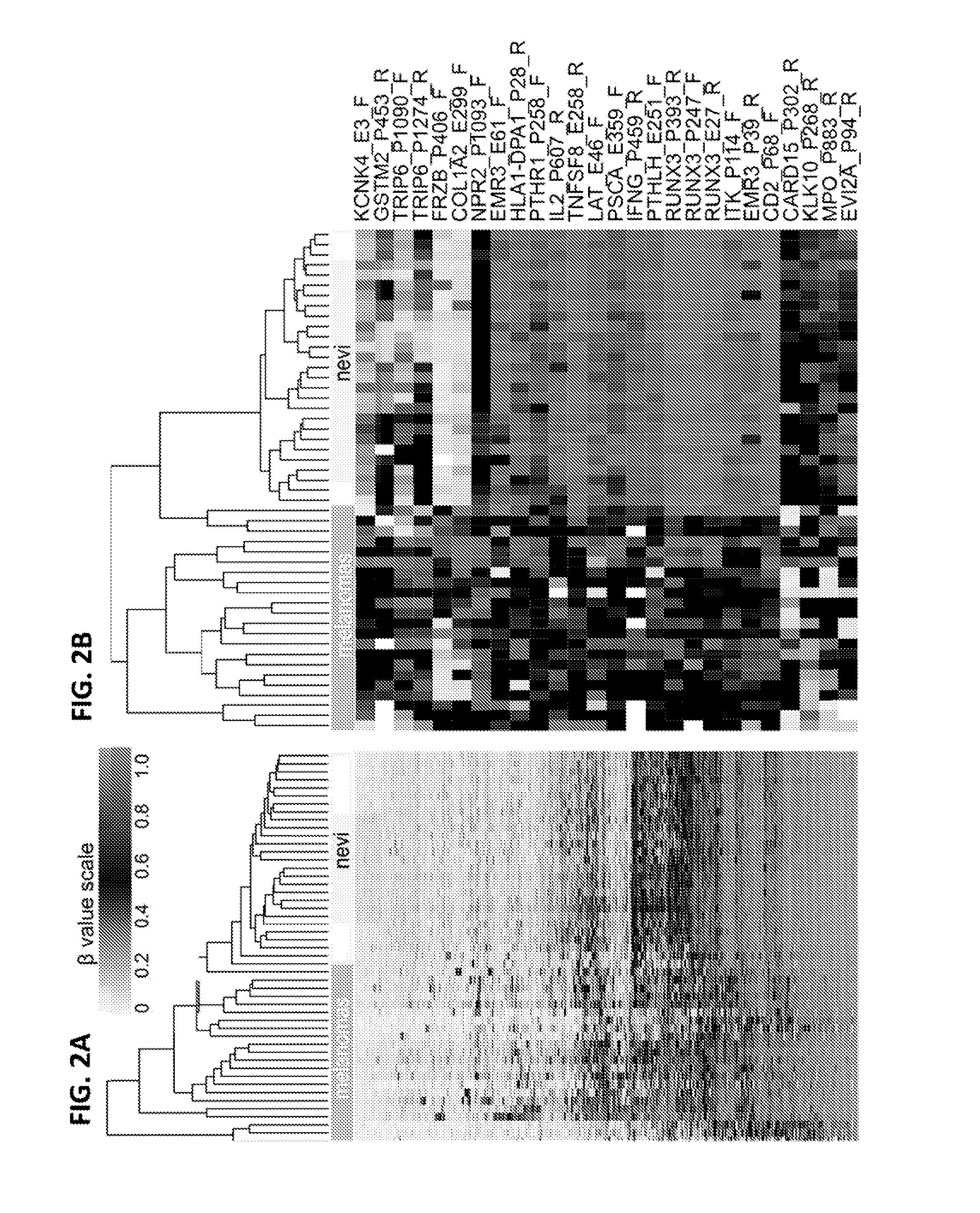Methods and kits for detecting melanoma
a technology for detecting kits and melanoma, applied in the field of new methods and kits for detecting melanoma, and differentially methylated regulatory elements associated with melanoma, can solve the problems of large disagreement between pathologists regarding the diagnosis of melanoma and benign diseases, death of diseases, and difficult early diagnosis
- Summary
- Abstract
- Description
- Claims
- Application Information
AI Technical Summary
Benefits of technology
Problems solved by technology
Method used
Image
Examples
Embodiment Construction
5.1. Definitions
[0029]The term “melanoma” refers to malignant neoplasms of melanocytes, which are pigment cells present normally in the epidermis, in adnexal structures including hair follicles, and sometimes in the dermis, as well as extracutaneous sites such as the mucosa, meninx, conjuctiva, and uvea. Sometimes it is referred to as “cutaneous melanoma” or “malignant melanoma.” There are at least four types of cutaneous melanoma: lentigo maligna melanoma (LMM), superficial spreading melanoma (SSM), nodular melanoma (NM), and acral lentiginous melanoma (ALM). Cutaneous melanoma typically starts as a proliferation of single melanocytes, e.g., at the junction of the epidermis and the dermis. The cells first grow in a horizontal manner and settle in an area of the skin that can vary from a few millimeters to several centimeters. As noted above, in most instances the transformed melanocytes produce increased amounts of pigment so that the area involved can be seen by the clinician.
[003...
PUM
| Property | Measurement | Unit |
|---|---|---|
| methylation sensitive high resolution melting assay | aaaaa | aaaaa |
| mass spectrometry | aaaaa | aaaaa |
| fluorescence in situ hybridization | aaaaa | aaaaa |
Abstract
Description
Claims
Application Information
 Login to View More
Login to View More - R&D
- Intellectual Property
- Life Sciences
- Materials
- Tech Scout
- Unparalleled Data Quality
- Higher Quality Content
- 60% Fewer Hallucinations
Browse by: Latest US Patents, China's latest patents, Technical Efficacy Thesaurus, Application Domain, Technology Topic, Popular Technical Reports.
© 2025 PatSnap. All rights reserved.Legal|Privacy policy|Modern Slavery Act Transparency Statement|Sitemap|About US| Contact US: help@patsnap.com



